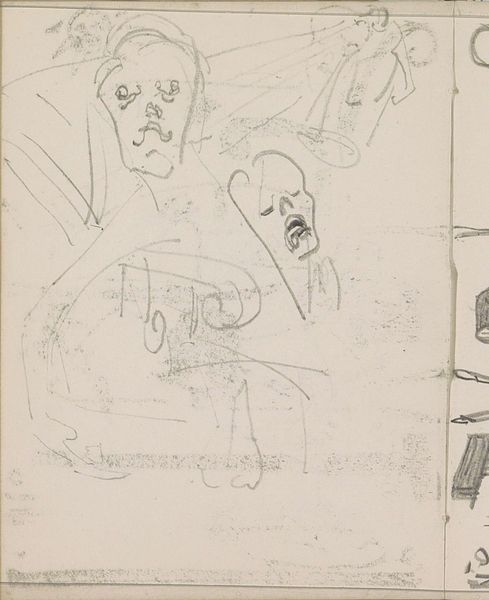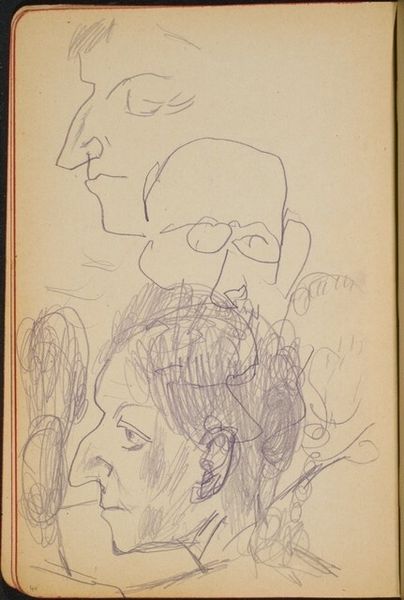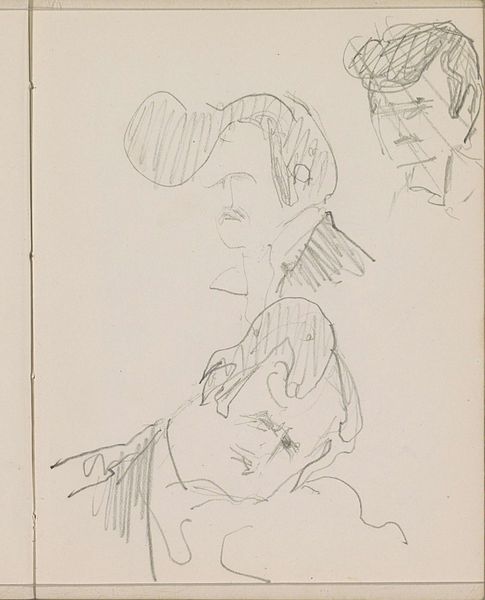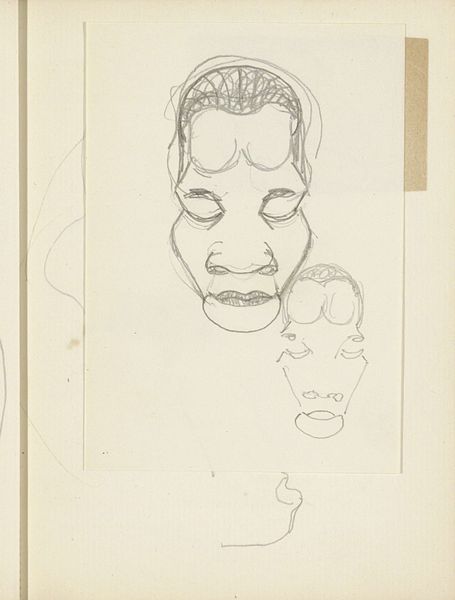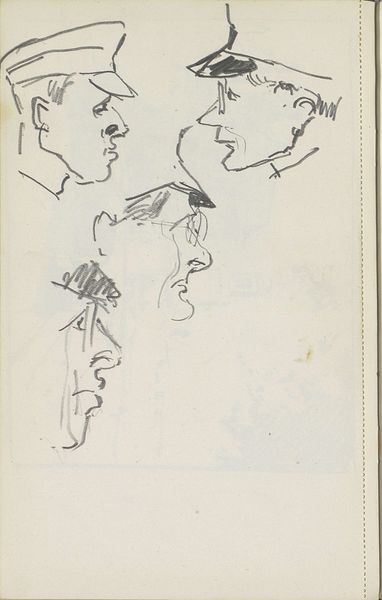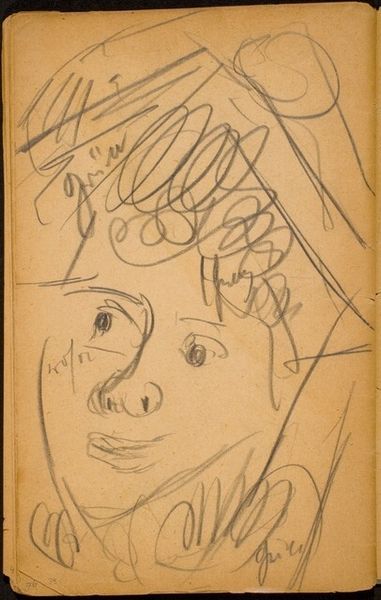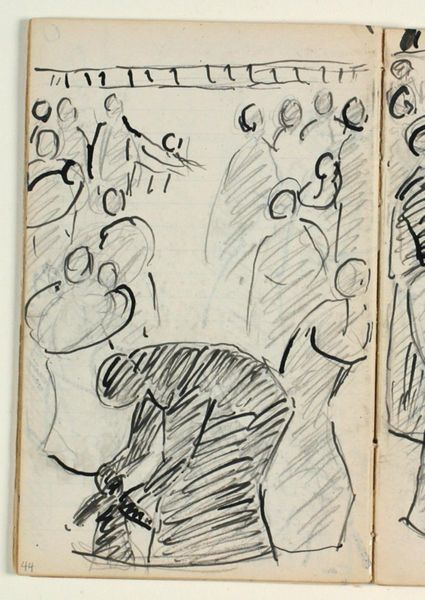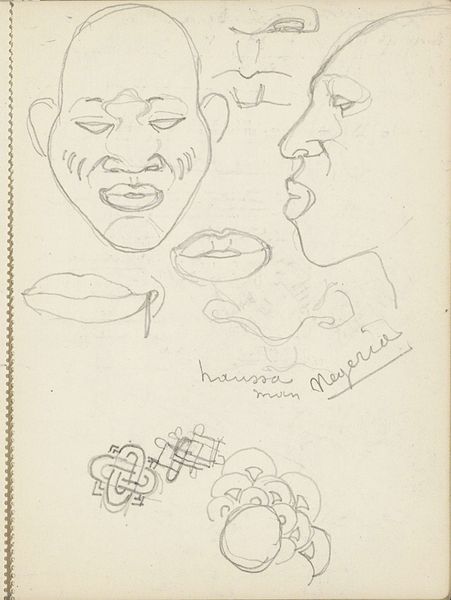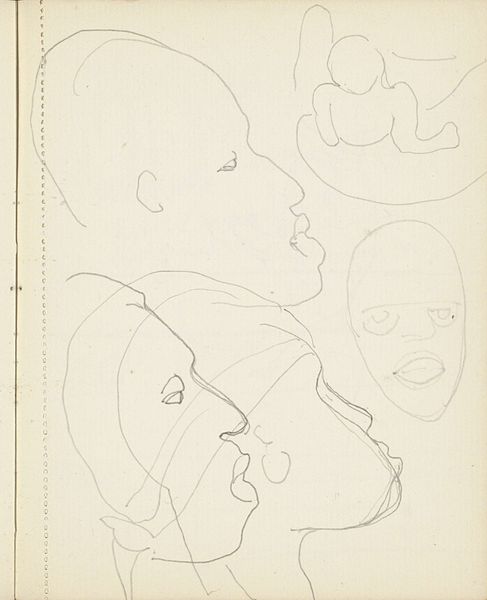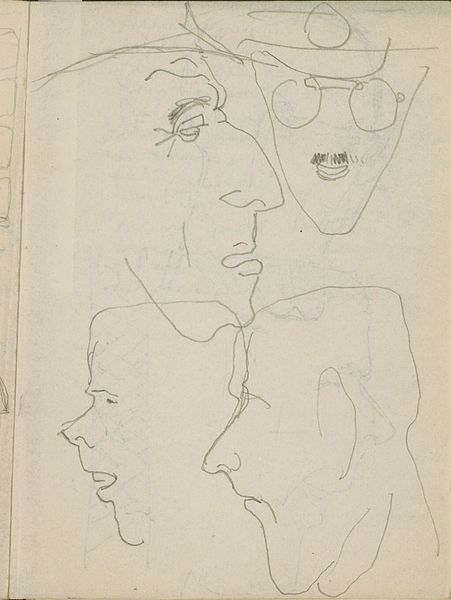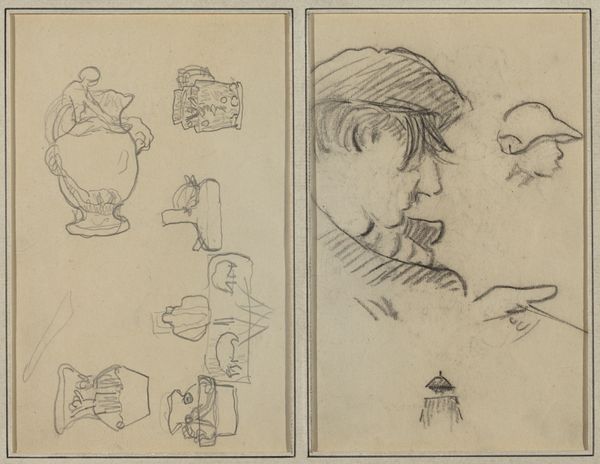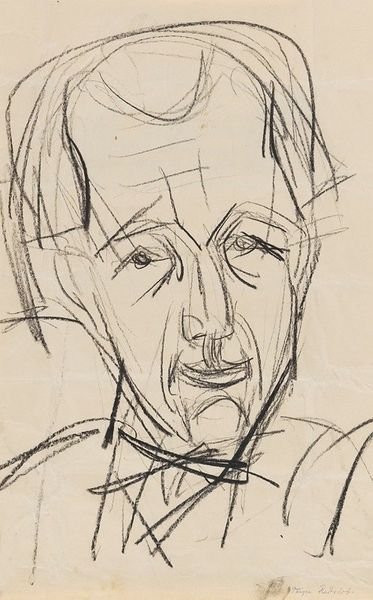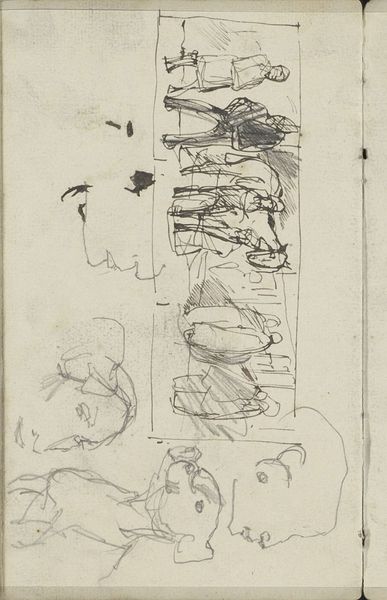
drawing, pencil, graphite
#
portrait
#
drawing
#
self-portrait
#
figuration
#
personal sketchbook
#
idea generation sketch
#
sketchwork
#
pencil
#
graphite
#
sketchbook drawing
#
sketchbook art
#
initial sketch
Copyright: Rijks Museum: Open Domain
Curator: This sketch, "Portret van Deek Stuward en een blokkenpatroon," or "Portrait of Deek Stuward and a Block Pattern," comes to us from Reijer Stolk and was likely created between 1916 and 1945. What stands out to you immediately about it? Editor: There’s an immediacy to the sketch that's striking. Raw, almost childlike in its execution, yet undeniably filled with… something. A quiet longing, perhaps? It feels incredibly personal. Curator: It's graphite and pencil on paper, yes, so there's an accessibility in materials, nothing fancy here, right? Just basic tools for capturing… something. Think about the availability of these humble materials in times of upheaval; during a World War period even preliminary sketches represent labor, time used, and reflect scarcity. The very act of drawing then becomes a commentary on social circumstance. Editor: Absolutely. The deliberate choice of such unassuming materials also speaks to the accessibility, but also consider that these materials could be seen to highlight that for marginalized identities in wartime making work often required finding resourcefulness, maybe rejecting grand gestures in favour of what was at hand. I wonder if there's also something to be said about class politics as we interrogate the art of that time, Reijer's work perhaps acting in quiet defiance of more elaborate methods associated with the bourgeoisie. Curator: You're bringing in vital class dimensions. What's compelling too, is seeing this work as preliminary for future creations – an artifact of thought. It brings process into sharp focus as opposed to emphasizing some pristine, finalized product. The artist allows us to witness an artwork coming to be and exposes their tools of construction for our appreciation and interpretation. Editor: Yes! I’m particularly drawn to the repeated portraiture, echoing or shadowing itself beside what could be architectural design or surface embellishment. I think of fragmented identities during wartime, disrupted subjectivities. Was the act of sketching itself a kind of self-discovery for Reijer Stolk in this disorienting historical moment? A claiming of self and identity, maybe through line and form, when external certainties crumbled? What are your thoughts about how figuration helps the artist work through turmoil? Curator: I love the interpretation of sketchbook as intimate site and the wartime context; I keep returning to the literal marks. Think about the skill involved, but also, how many marks were available in those pencil sticks and what level of precision that gave Reijer? Those individual lines, the shading --each one a choice, made possibly to fill time? Let us be grateful that what otherwise would have remained ephemeral survived for study and contextual understanding today. Editor: It certainly provides a window. So much more to explore, to interpret, to consider here in relation to its complicated moment. Curator: Yes. Indeed.
Comments
No comments
Be the first to comment and join the conversation on the ultimate creative platform.
